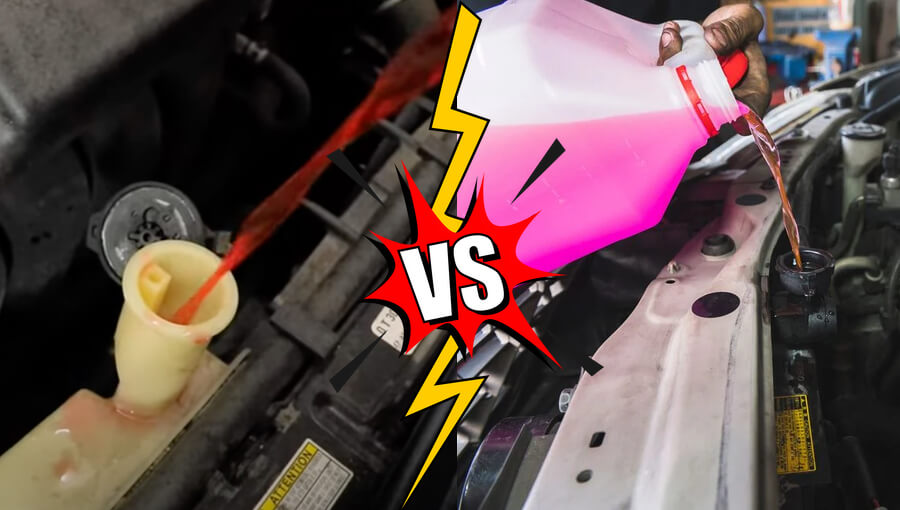September 17, 2022

Regardless of your car model, sometimes your coolant level will drop so much that you need to add some more to keep your engine running smoothly and safely. But, what determines whether you add coolant to your radiator or reservoir?
If your vehicle has a radiator reservoir, it is usually best to add the coolant to its reservoir rather than the radiator itself. However, in cases where the reservoir tank is empty, you should first add the coolant into the radiator directly, as it will typically have lower-than-normal coolant levels. But, you’ll also need to top up the radiator through the coolant reservoir.
On the other car, if you drive an older model car, your best approach may be to always pour the coolant directly into the radiator.
As a rule of thumb, if your car has a radiator reservoir, we recommend always pouring your coolant there. This is especially relevant if you’re only topping up the coolant levels because it got low. Nonetheless, most modern cars will have no issues if you add coolant directly into the radiator as the older coolant will not interfere with the new one.
But, there is an exception.
If your radiator already contains a lot of water, adding coolant directly to it may not be a good move. This is because excess water may cause a buildup in your radiator. However, adding coolant to the water in your radiator can also help prevent corrosion by increasing the coolant’s boiling point and reducing its freezing point.
Remember that a 50-50 coolant mixture is the ideal mix ratio for optimum coolant performance. Most auto part stores will sell their coolant with this mix ratio. However, if you choose to buy your antifreeze and create the mix yourself, be careful to achieve the proper mix ratio.
Can You Add Engine Coolant Without Flushing?
The answer is yes. You can add new engine coolant without flushing out the old one.
However, with time, the older coolant will become acidic, leading to corrosion within your cooling system. It may also cause several other issues in your car’s cooling system.
Therefore, depending on how old your existing coolant is, it is usually good to flush out the old one by pouring in a new coolant.
Does My Engine Need To Be Cold To Add Coolant?
It is usually best to wait some time to give your engine time to cool down before pouring coolant (or antifreeze) into it. Otherwise, you may have to deal with an overheating engine.
Can You Add Undiluted Coolant in Radiator?
First off, let us explore what happens when you don’t add water to your coolant.
On its own, water transfers heat much better than most liquids. But, it boils too fast at 212 degrees at sea level. However, when you add some coolant into the mix, its boiling temperature significantly increases when increases its ability to handle more significant heat without evaporating.
On the hand, boiling coolant is not as efficient as water when it comes to heat transfer. So, a mixture of water and antifreeze is necessary to create a coolant mix that does not boil and evaporate.
If the water evaporates, it becomes less efficient at heat transfer and becomes an insulator, which leads to a build-up of heat in your car’s engine cylinder. Over time, this can reduce your car engine’s performance or even damage your engine outrightly. So, while excess antifreeze may not affect your radiator, it will affect its operating temperature and your engine performance.
So, can you add undiluted coolant to your car radiator? Technically, yes. But, it is not advisable as it makes your coolant less efficient at cooling your engine.
Fun fact? When liquid coolant is pressurized, it causes its static boiling point to go up. As such, radiator caps typically have ratings to indicate their release pressure. Standard ratings include 8, 10, and 12 lbs. With a 12 lb cap, the implication is that the release pressure for the cap is 12 PSI.
A 60-40 coolant-water mix ratio with a 12 lb pressurized cap will boil until it reaches 264 degrees. The same mix ratio with a 16 lb cap will not boil until it exceeds 273 degrees.
.
